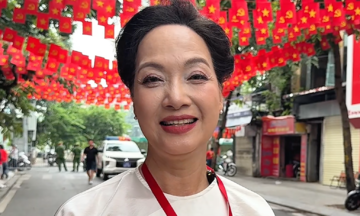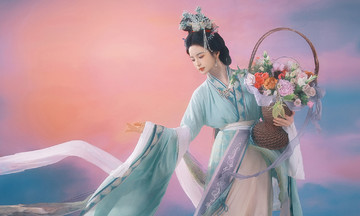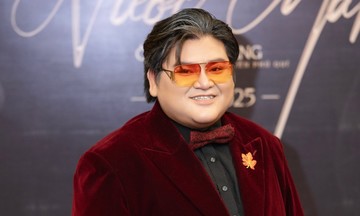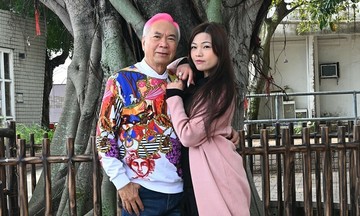Just over a week before his passing, as he lay in a hospital bed battling cancer, Le Thiet Cuong found solace in the poignant melody of Ozzy Osbourne's "Mama, I'm Coming Home."
The artist drew strength from Zen poetry, music, and painting, using them as a spiritual balm to transcend physical pain and fully experience the beauty of life.
His final messages to his audience and friends were simple reflections on the finite nature of life, yet filled with a yearning to live and love: "If there is, there is from the slightest/If not, then the whole world is also not" (Zen Master Tu Dao Hanh).
On 15/7, after a period of hospitalization and clinging to the last vestiges of hope, during a rare moment of respite from the pain, Le Thiet Cuong expressed his desire to "Go home, go home to mother." "He went home, looked around the house, seemed at peace, and then gradually weakened," his sister, Le Hoa, shared.
Having started painting at the age of 11, Le Thiet Cuong dedicated over half a century to art, working and creating tirelessly. Before his death, he published a book of art criticism, "Conversations with Paintings", and held an exhibition of ceramic works inspired by the writer Nguyen Huy Thiep.
"The book launch and the exhibition were like his final battles. He also meticulously organized the funeral for his close friend, the poet Nguyen Thuy Kha. And now, he has joined the ranks of the literary figures he so admired and was close to, like poets Hoang Cam and Dang Dinh Hung," said journalist Tran Nhat Minh, a close friend of the artist.
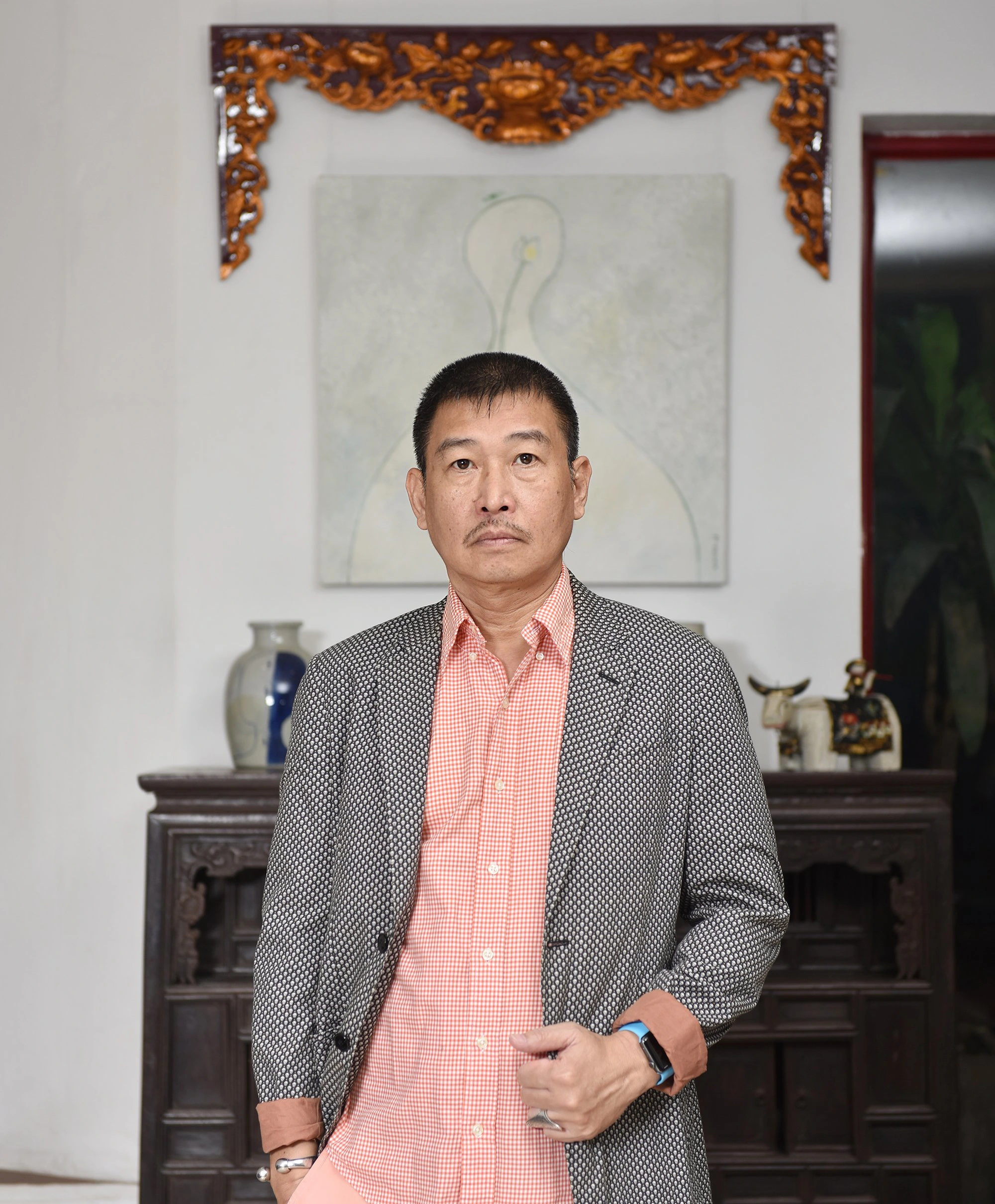 |
Artist Le Thiet Cuong was the son of screenwriter and poet Le Nguyen and cinematographer Do Phuong Thao. At the age of 11, his parents enrolled him in painting classes at a nearby children's center. He later graduated from the Faculty of Fine Arts Design at the Hanoi University of Theatre and Cinema. Photo: Writers' Association Publishing House |
Le Thiet Cuong's artistic journey was deeply marked by the concept of minimalism. His foray into minimalist art began in 1984. After leaving the military and facing unemployment, he frequently visited his neighbor, the poet Dang Dinh Hung. Until Dang Dinh Hung's death six years later, Le Thiet Cuong considered him a mentor, learning from him about art in general, including painting. "He was the one who discovered the seed of minimalism in me and nurtured me to follow this path," Le Thiet Cuong once said.
In his essay "My Teacher" from Dang Dinh Hung's posthumous works, Le Thiet Cuong recalled preparing paints and brushes for the poet, who quickly painted two words on the canvas, read as three syllables: "Night Virgule" (Night comma). "Was it a poem, or a painting about a poem? I don't know, but it didn't matter because it was the first lesson he taught me, opening my mind to the concept of minimalism in art, a path I've continued on to this day," Le Thiet Cuong wrote.
His paintings, regardless of the medium, exhibit extreme restraint in composition, lines, and color. Critic Nguyen Thuy Kha once remarked: "Le Thiet Cuong's paintings are vast and unpredictable. Each piece typically features a single dominant color, which dissolves across a tranquil surface. The color and composition invite viewers to contemplate the realities hidden within each individual."
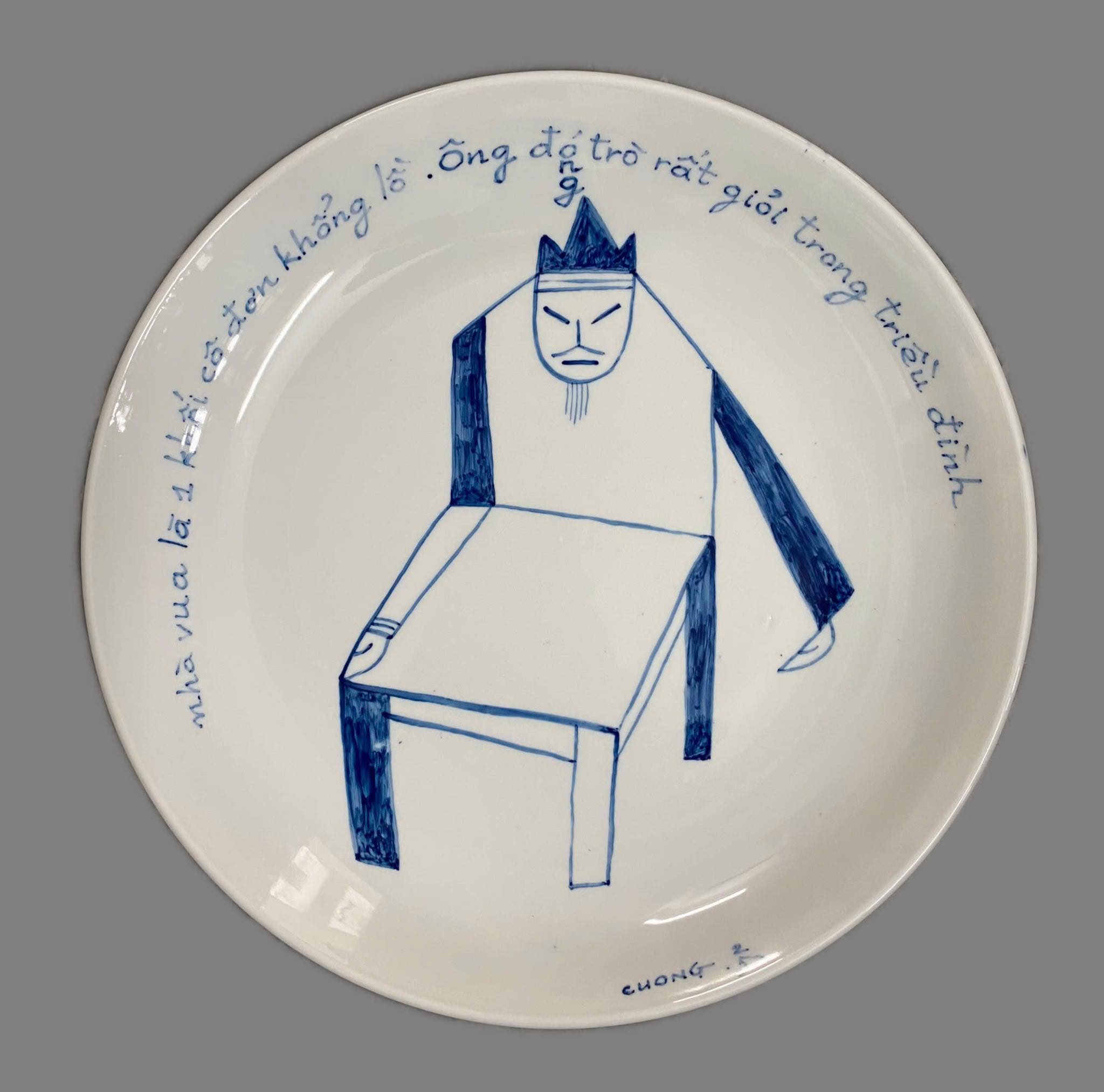 |
Ceramic painting by Le Thiet Cuong, inspired by the character Phang's commentary on King Gia Long in the short story "Gold Fire" (by Nguyen Huy Thiep). Photo: Gallery39 |
Minimalist painting, while seemingly simple, is far from easy, according to many in the field. Writer Nguyen Huy Thiep, commenting on Le Thiet Cuong's 2008 exhibition "Lan's Story", wrote: "This style demands confidence and wisdom from the artist. Evocativeness is the key to whether these paintings 'stand' or not. While many artists suffer from being verbose and not knowing when to stop, Le Thiet Cuong excels in knowing precisely when to conclude his paintings."
Le Thiet Cuong's minimalism is deeply intertwined with Buddhist philosophy, which he contemplated for many years. In "Conversations with Paintings", he wrote: "Minimalism is Zen, it is tranquility, it is wordless, economical in form, color, and line. It speaks through silence, a 'thunderous silence.' Buddhists believe that spiritual practice is about returning to oneself, discovering one's 'true face,' achieving enlightenment, 'turning around is the shore.' Similarly, art is about creating oneself, finding oneself, returning to one's inner self."
In addition to independent paintings, the artist created hundreds of book covers, illustrations for poems and stories, newspaper illustrations, ceramics, and sculptures. He believed each art form possesses its own unique language. A painting inspired by a poem or a verse becomes a second text of that work, a different interpretation of it.
Luong Xuan Doan, President of the Vietnam Fine Arts Association, stated: "From the 1990s onwards, with his distinctive style and numerous high-quality exhibitions, Le Thiet Cuong consistently made a significant impact on contemporary Vietnamese art. As a curator, he helped many young talents reach the public."
Beyond painting, Le Thiet Cuong was knowledgeable in various fields, including photography, music, literature, and criticism. During his lifetime, he published two books of criticism: "Seeing" (2017) and "Conversations with Paintings" (2025), and a collection of essays, "House and People" (2024).
Poet Nguyen Quang Thieu, President of the Vietnam Writers' Association, noted that Le Thiet Cuong was a voracious reader with deep understanding. "His critiques were concise, yet pinpointed key issues. His writing also followed the minimalist school: refined, concise, and profound," Nguyen Quang Thieu said.
The poet perceived the artist as rigorous in his artistic evaluation and creation, and strict with himself. He always encouraged friends and younger artists to embrace innovation, experimentation, and creativity. When Nguyen Quang Thieu first picked up a brush, the artist frankly pointed out his strengths and weaknesses, encouraging him: "Paint what you feel, with your poetic spirit. Learn from established artists about their work ethic, not their style. Do what the world hasn't done yet."
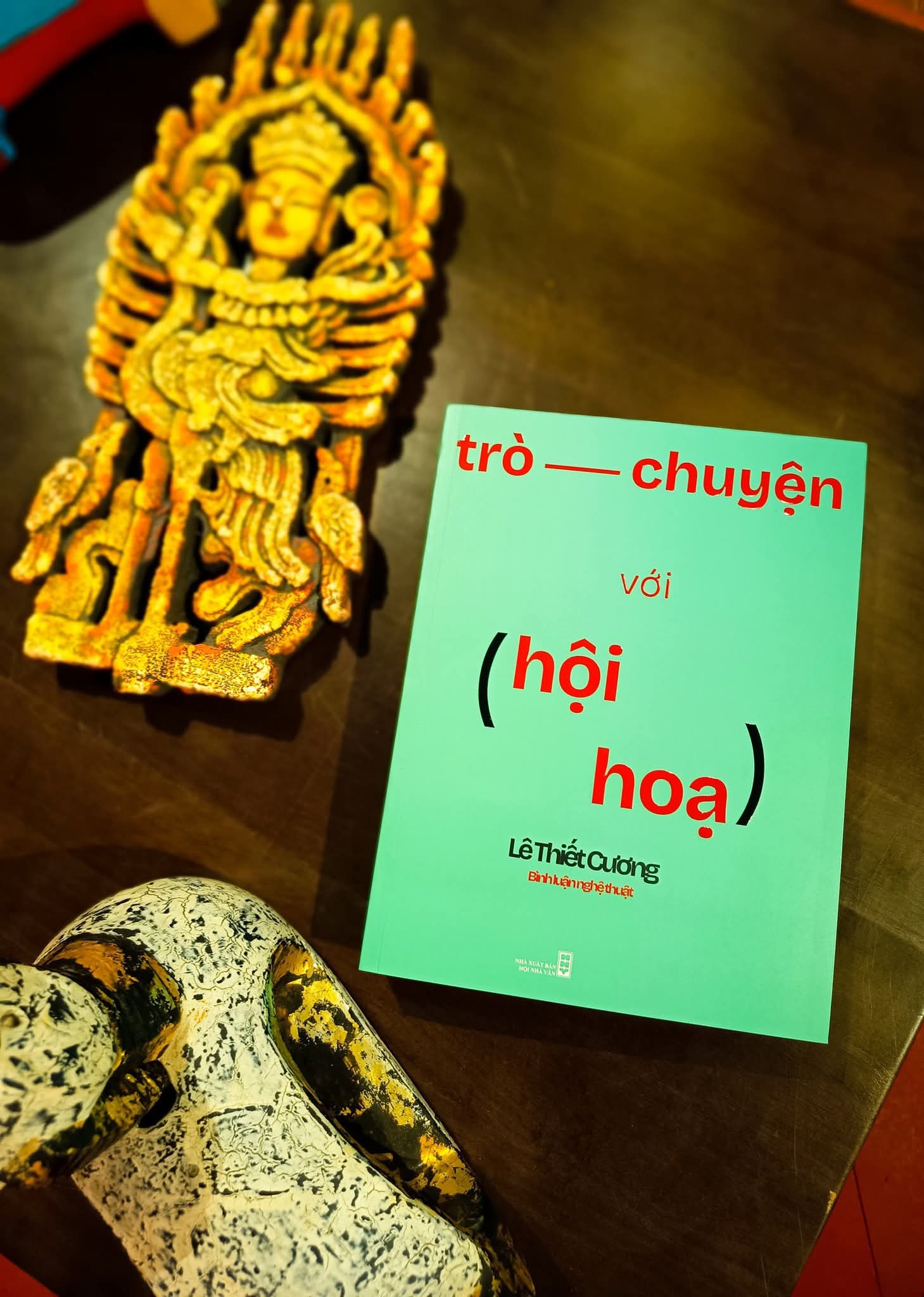 |
Le Thiet Cuong's book "Conversations with Paintings." Photo: Writers' Association Publishing House |
In his personal life, Le Thiet Cuong was respected in the art community for his generosity and chivalry. Having achieved financial stability through his art sales, he transformed his house at 39 Ly Quoc Su Street, Hanoi, into a gallery, a popular gathering place for many in the art world.
For poet Nguyen Anh Vu, Le Thiet Cuong was like an older brother, a source of spiritual support for younger artists: "He possessed the sophistication and elegance of a Hanoi native. He was straightforward, even hot-tempered, but very chivalrous, generous, and kind to his friends." During his lifetime, the artist often quoted Trinh Cong Son's song "Distant Love": "What will we see tomorrow morning, if we still have friends."
Bidding farewell to his friend, poet Nguyen Quang Thieu wrote: "Finally, Cuong has returned home, the place where he lived his most beautiful, most creative, and happiest years, surrounded by his most sincere friends.
Although Cuong's life was not long, he lived it fully, true to himself in many ways, and without fear. Looking at Cuong, I knew his time was limited. In his eyes as he looked at his friends, I saw the light of life dimming, but I didn't see a trace of fear."
Ha Thu - Phuong Linh



